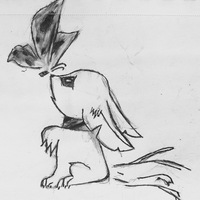
Y'' + y' – 6y=0; y0 = 3, x0 =0, y'0 =1
 0
0
 0
0
Ответы на вопрос
 Внимание! Ответы на вопросы дают живые люди. Они могут содержать ошибочную информацию, заблуждения, а также ответы могут быть сгенерированы нейросетями. Будьте внимательны. Если вы уверены, что ответ неверный, нажмите кнопку "Пожаловаться" под ответом.
Внимание! Ответы на вопросы дают живые люди. Они могут содержать ошибочную информацию, заблуждения, а также ответы могут быть сгенерированы нейросетями. Будьте внимательны. Если вы уверены, что ответ неверный, нажмите кнопку "Пожаловаться" под ответом.

Пошаговое объяснение:
Получилось так.
На фото


 0
0
 0
0

To solve the second-order linear homogeneous differential equation with the given initial conditions and , you can follow these steps:
Step 1: Find the characteristic equation The characteristic equation for this differential equation is obtained by replacing with , with , and with :
Now, you need to solve this quadratic equation for :
This equation can be factored as:
Setting each factor equal to zero gives two possible values for :
- =>
- =>
So, the characteristic roots are and .
Step 2: Write down the general solution The general solution of the differential equation is given by:
Where and are constants to be determined and and are the characteristic roots we found earlier.
So, the general solution is:
Step 3: Use initial conditions to find the constants Now, you can use the initial conditions and to find the values of and .
- :
 0
0
 0
0
Топ вопросов за вчера в категории Математика
Последние заданные вопросы в категории Математика
-
Математика
-
Литература
-
Алгебра
-
Русский язык
-
Геометрия
-
Английский язык
-
Химия
-
Физика
-
Биология
-
Другие предметы
-
История
-
Обществознание
-
Окружающий мир
-
География
-
Українська мова
-
Информатика
-
Українська література
-
Қазақ тiлi
-
Экономика
-
Музыка
-
Право
-
Беларуская мова
-
Французский язык
-
Немецкий язык
-
МХК
-
ОБЖ
-
Психология
-
Физкультура и спорт
-
Астрономия
-
Кыргыз тили
-
Оʻzbek tili





















